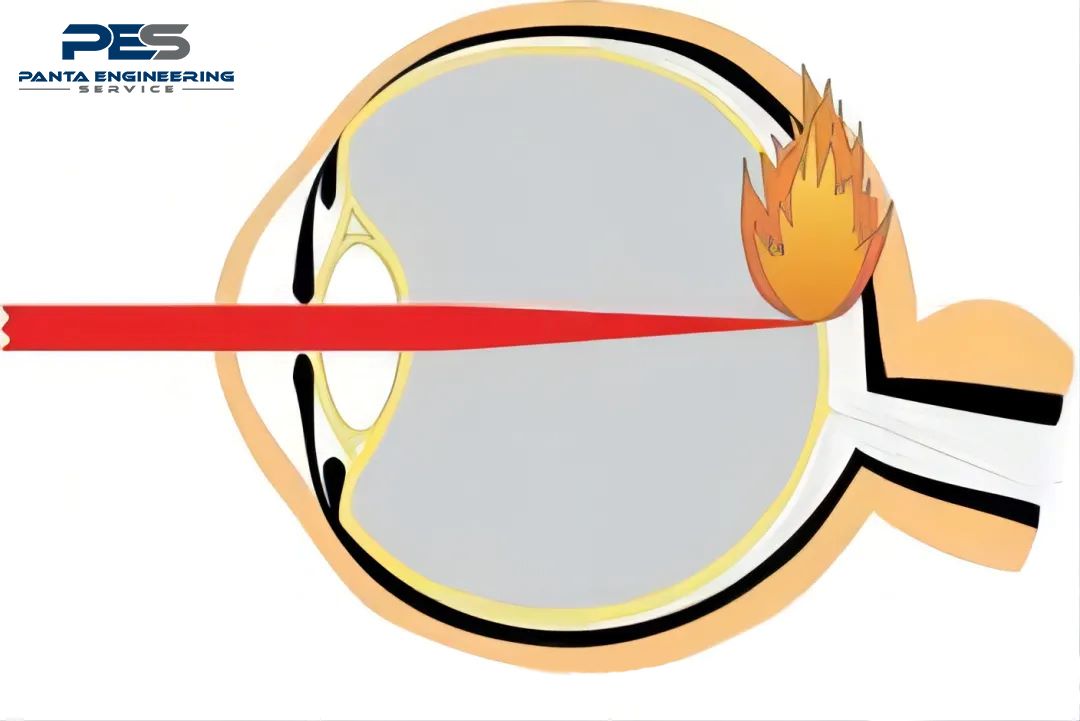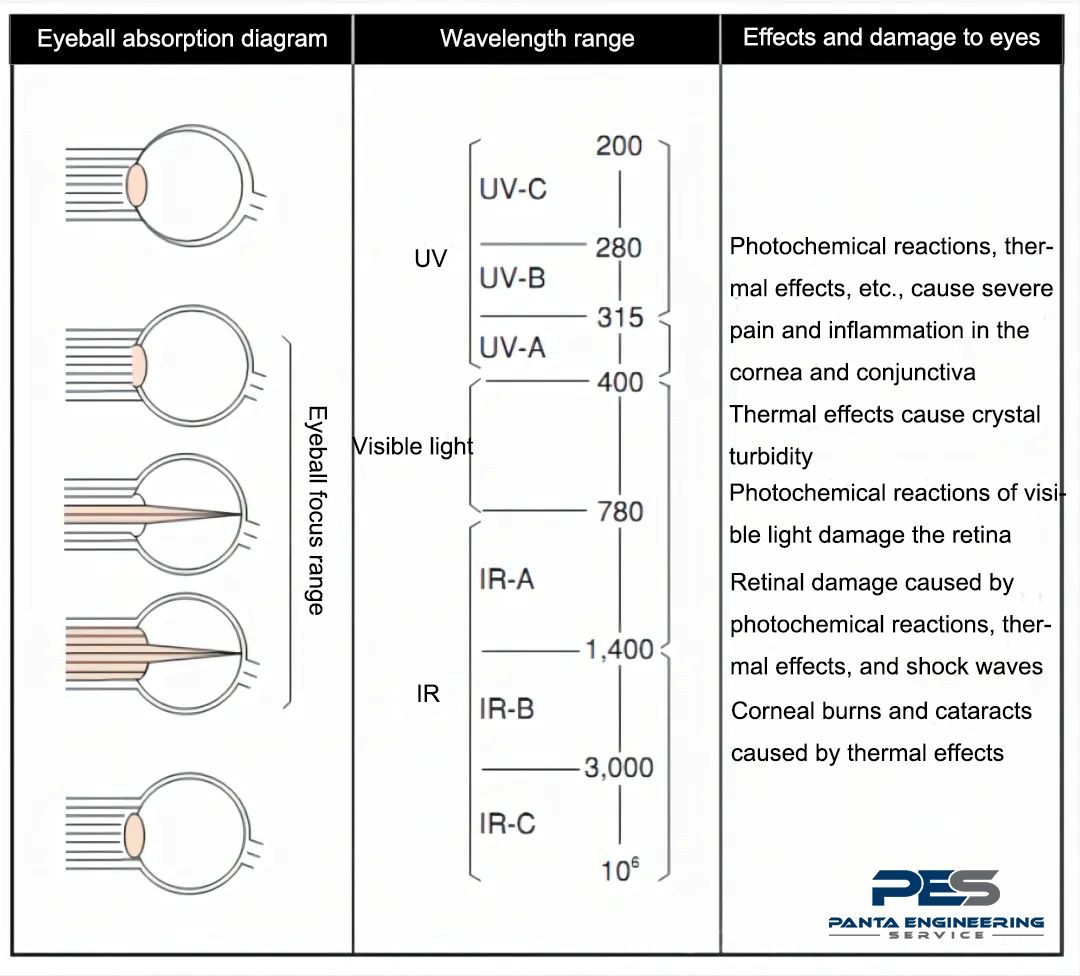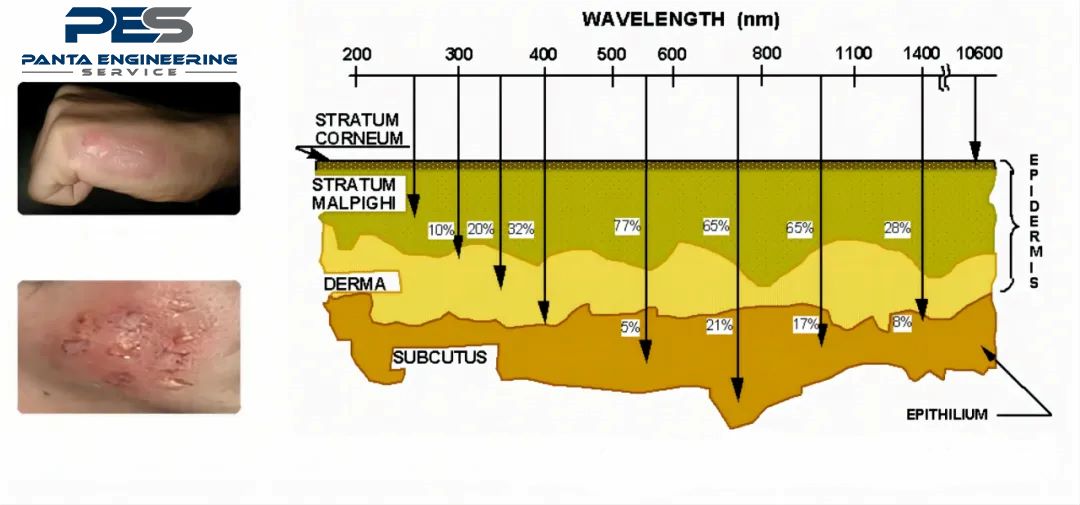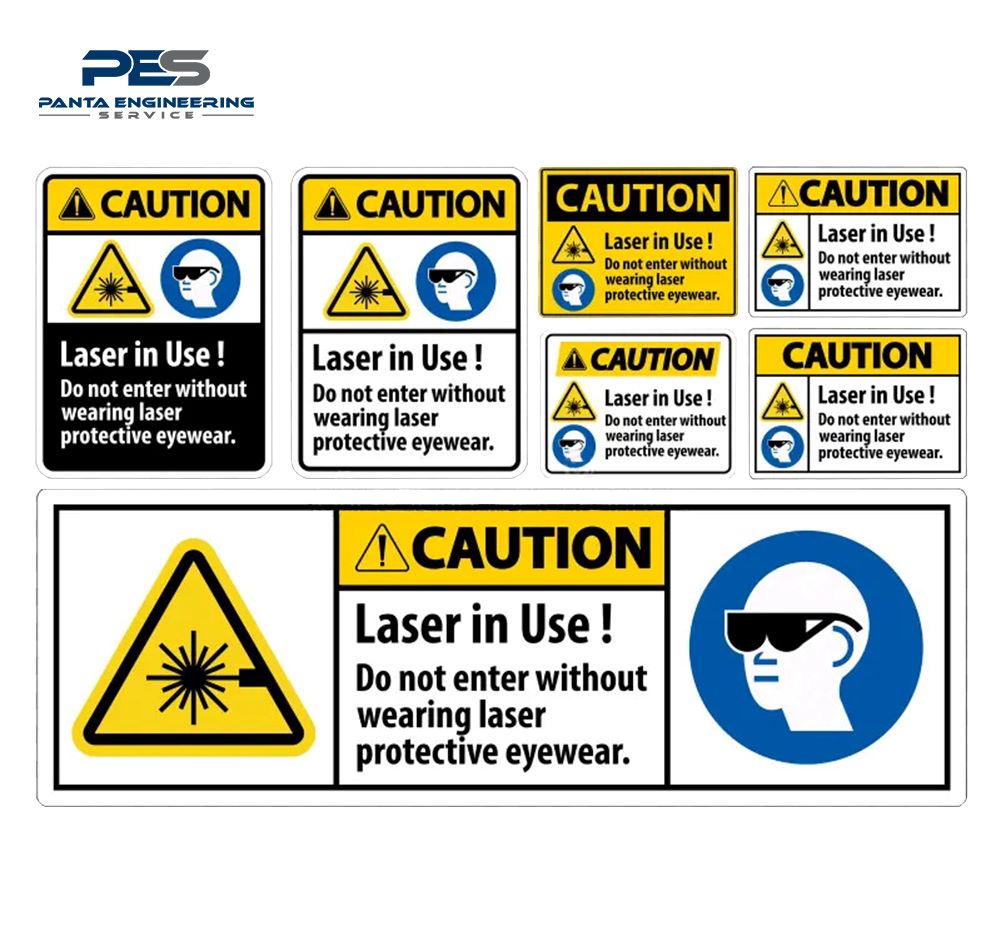Safety and protection of laser use
Jul 25, 2024With the rapid expansion of laser applications, more and more traditional processing fields have begun to use lasers, such as laser cutting, laser welding, laser marking, etc. The safety and protection of laser use deserves attention.
The handheld fiber laser welding machine is a new generation of laser welding equipment. It belongs to non-contact welding. The operation process does not require pressurization. Its working principle is to directly irradiate a high-energy laser beam on the surface of the material. Through the interaction between the laser and the material, the material is melted inside, and then cooled and crystallized to form a weld.
The handheld fiber laser welding machine fills the gap of handheld welding in the laser equipment industry, subverts the working mode of traditional laser welding machines, and replaces the previous fixed optical path with a handheld one. It is flexible and convenient, with a long welding distance, and it also makes it possible to operate laser welding outdoors.
Handheld welding is mainly aimed at laser welding of long-distance and large workpieces, overcoming the limitations of the workbench travel space. The heat-affected area is small during welding, which will not cause deformation, blackening, or traces on the back of the workpiece. Moreover, the welding depth is large, the welding is firm, and the melting is sufficient. It can not only realize thermal conduction welding, but also continuous deep melting welding, spot welding, butt welding, lap welding, sealing welding, seam welding, etc.
This process subverts the working mode of traditional laser welding machines. It has the advantages of simple operation, beautiful welds, fast welding speed and no consumables. It can perfectly replace traditional argon arc welding, stainless steel plates, iron plates, aluminum plates and other metal materials for welding.
Laser safety training is essential for the safety and efficiency of laser welding machines during operation. During the laser welding process, high-intensity light, heat and harmful gases may be generated, which poses a potential risk to the health of operators. Through laser safety training, operators can learn how to properly use personal protective equipment, such as wearing protective glasses and masks, and how to avoid direct or indirect contact with the laser beam to ensure that the eyes and skin are effectively protected during welding work.
What are the hazards of lasers:
1. Laser biological effects
Lasers can cause serious skin damage, so skin protection is necessary, but eye damage is the main danger. Beam damage can be divided into three forms:
Thermal: This is the result of heat generation and absorption of exposed parts, causing burns to the skin and eyes.
Acoustic: This produces a mechanical shock wave, similar to the wave effect caused by throwing a pebble into a pond. Acoustic effects can cause local vaporization and tissue damage.
Photochemical: Certain wavelengths can produce chemical reactions in tissues, which in some cases can cause cataracts, corneal or retinal burns, and increase the risk of skin cancer.
The results of laser exposure to the skin can vary, from mild redness and pain to third-degree burns, depending on the type of laser, pulse duration and repetitions, and wavelength.
Eye injuries are the primary concern. The effects on the eye depend on a variety of factors, including pupil size, pigmentation, laser pulse duration and repetitions, and wavelength. Different wavelengths penetrate the eye to different levels, causing damage to that level as well as the cornea, lens, or retina:

The high temperature generated by the laser can instantly coagulate or vaporize proteins, causing damage to biological tissues. The eye is the most sensitive organ in the human body to lasers. Since the focusing effect of the eyeball on light can increase the energy density on the retina by 105 times, low-dose exposure can cause severe damage to the retina and lead to decreased vision or even blindness.
The damage caused to the eyes by lasers of different wavelengths is different because the eyes have different transmittances to lasers of different wavelengths, and the damaged parts of the eyes are different. If you look directly at the laser welding process without goggles, it will cause irreversible damage to the eyes.
Because the human eye has a focusing effect, weak external light will be focused after entering the eye, and the energy density will increase accordingly, which will cause stronger damage to the eyes.

The infrared light emitted by the laser is very harmful to the human eye, burning the retina, causing vision loss or even blindness. The light beam will penetrate the lens when entering the pupil and focus on the retina. The imaging point is exactly the most sensitive area of the retina, the macula. After this area is damaged, there will always be a black spot in the center of the human eye's field of vision, which cannot be restored. Due to the invisibility of infrared light, even if a small amount of laser is taken into the human eye, the human eye cannot respond to closing the eyes in time, and the laser will continue to enter the pupil, causing greater damage than strong visible light. Therefore, be sure to wear goggles when performing laser processing operations, and it is best to do full body protection if conditions permit.
When the light in the room is dim, the pupil will dilate to accept more light, so that it can be observed more clearly. If there is laser radiation in this environment with dark visible light, the laser entering the eye will also increase, and the eye damage will be more serious. Therefore, the workstation and the protective room must be brightly lit, and the factory lighting must be sufficient to avoid greater damage to the eyes.
2. The harm of laser to the skin:

Laser irradiation to the skin can cause burns, rashes, blisters, pigmentation, and complete destruction of the subcutaneous tissue. Different wavelengths can reach different parts of the skin tissue. Generally speaking, the longer the wavelength, the stronger the penetration ability. At 400nm, the distance of skin tissue penetration does not exceed 1mm, and it can reach the dermis. The penetration distance of 514nm is about 0.5mm~2mm, and the penetration distance of 630nm is about 1mm~6mm. 1070nm infrared light can penetrate the epidermis and dermis until it reaches the subcutaneous tissue.
How to properly protect lasers:
Engineering and technical management:
(1) The management and use of lasers must be carried out by professional (professional) personnel. Personnel who have not received training and education are not allowed to start and use lasers without authorization;
(2) Install an interlocking key switch on the trigger system of the laser equipment to ensure that it can only be triggered and started after the interlocking switch is turned on with the key. It cannot be started without the key;
(3) The room where the laser is placed must have bright light. When people are in a bright light environment, their pupils shrink to prevent the amount of light transmitted to the retina when the laser beam enters the eye;
(4) For the height of the laser, the laser beam path should avoid the horizontal position of the eyes of a normal person when standing or sitting, and the visual axis of the eye cannot be parallel to the light outlet.
Medical supervision:
(1) Workers using Class 3B and Class 4 laser products should undergo medical examinations by qualified medical personnel;
(2) Workers using Class 3B and Class 4 laser products should undergo medical examinations before, during and after work, and keep original records;
(3) Workers who are exposed to more laser radiation should eat more foods with anti-radiation effects such as rapeseed, cabbage, and radish.
Personnel training:
Educate and train workers who operate lasers.
(1) Be familiar with the entire working process of the laser system;
(2) Take personal protection measures;
(3) Correctly implement hazard control procedures;
(4) Correctly use warning signs;
(5) Establish accident reporting procedures;
(6) Understand the biological effects of lasers on the eyes and skin.
Lasers should be strictly controlled:
(1) Do not aim the laser beam at the human body, especially the eyes, in the room where the lasers are stored and used. Because laser damage to the eyes is extremely difficult to recover, all damage is permanent;
(2) Before starting the laser, the personnel on site must be warned of the possible hazards and wear safety glasses;
(3) Danger signs should be posted in obvious locations inside and outside the work area with strong lasers and on the door of the laser laboratory.
Laser controlled area:
(1) The use of laser equipment must be controlled to be limited to a certain area;
(2) According to general requirements, door guards and safe spring locks, interlocks, etc. should be set up to ensure that outsiders and unprotected personnel cannot enter the controlled area. Even if the door is accidentally opened, the laser can stop working immediately;
(3) The room should not be light-transmitting to prevent harmful laser beams from leaking out; at the same time, an emergency switch should be set up so that the laser can be stopped in an emergency in dangerous situations;
(4) Do not place objects with mirror reflection around the laser system to prevent multiple reflections from injuring on-site personnel;
(5) Personnel not related to the work are strictly prohibited from entering the laser control area.
Correct use of various warning and safety signs:
(1) Post warning signs in conspicuous locations on the laser equipment housing and operating panel. Use standard signs according to the specific degree of hazard of the laser, and make them eye-catching;
(2) Appropriate warning signs should be posted at the entrance of the working area or protective enclosure of Class 3B and Class 4 laser products.

Use of laser product safety signs:
(1) All laser products must be affixed with laser safety signs;
(2) Each device must also have safety signs such as laser warnings, laser radiation classification instructions, and radiation windows;
(3) The laser safety sign must be affixed in a place where it can be seen by the human eye and is not harmed by the laser.
Summary:
Laser operation authorization: clarify employees' authority to use lasers, and different levels of operational authority have different permissions.
Formulate rules and regulations: strictly control areas involving laser radiation and formulate laser safety operation guidelines.
Supervision and inspection mechanism: regularly maintain and inspect the system's safety systems and facilities to see whether they are feasible and whether they are properly implemented and used.
Manual safety training: Establish a safety training mechanism for new employees and a regular evaluation mechanism for old employees to improve employees' safety awareness.
Personal protection guide:
Individuals need to protect themselves when using laser welding machines.
Personal protective equipment:
Personal protective equipment is used as a last resort when engineering and management control measures cannot fully reduce the risk. Laser personal protective equipment may include: laser protective glasses and laser protective clothing.
Laser protective glasses:
Attenuate laser radiation and protect the eyes. Laser protective glasses must meet very specific requirements: they must be approved and labeled according to national standards; they must have applicable scenarios suitable for laser type, wavelength, operating mode (continuous wave and pulse wave) and power setting; laser protective glasses should be clearly marked and correctly selected for specific lasers; the frame and side parts must have a certain degree of protection.
Eye protection:
(1) After taking the above measures, when the human eye may still be exposed to laser irradiation exceeding the safety standard value, it is necessary to select protective glasses with appropriate optical density according to the wavelength of such lasers to strengthen eye protection;
(2) Do not rely entirely on protective glasses, and do not look directly into the laser beam even if wearing protective glasses.
Choice of laser protective clothing:
Gloves or special clothing to reduce skin exposure.
(1) Provide appropriate protective clothing for workers who are exposed to radiation exceeding the skin MPE value as much as possible;
(2) Protective clothing should be made of suitable fire-resistant and heat-resistant materials;
(3) Protective clothing should not expose the skin as much as possible.
Skin protection:
(1) Wear long-sleeved work clothes made of flame-retardant materials;
(2) In laser-controlled areas, install curtains and light-shielding panels made of flame-retardant materials and coated with black or blue silicon materials to absorb ultraviolet radiation and block infrared rays.